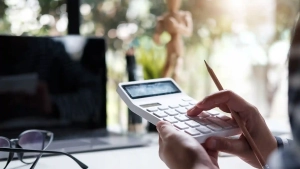How to Send a Letter in Germany: A Step-by-Step Guide for Newcomers
- How to Send a Letter in Germany: A Step-by-Step Guide for Newcomers
- Understanding the German Postal System: Deutsche Post and DHL
- How to Address an Envelope in Germany
- Choosing the Right Envelope in Germany
- How to Buy a Postage Stamp in Germany
- Where to Drop Off Your Letter in Germany
- How to Send a Letter Internationally from Germany
- Tracking a Letter in Germany: Einschreiben (Registered Mail)
- Practical Tips for Sending Letters in Germany
- Final Thoughts: Sending Mail in Germany Made Easy
- FAQ: Sending Letter in Germany
- How do I send a letter to someone in Germany?
- How much does it cost to send a letter in Germany?
- How do you write an envelope to Germany?
- Can you send a letter to Germany?
- How long does it take for a letter to arrive in Germany?
- How is mail delivered in Germany?
- How do Germans write letters?
- Where can I send letters in Germany?
Sending a letter in Germany might seem simple, but for newcomers, understanding how the postal system works can be confusing. Whether you are mailing a letter within Germany or sending one internationally, following the correct steps—from addressing the envelope to choosing the right postage—is essential.
This guide explains everything you need to know about sending mail in Germany efficiently.
Understanding the German Postal System: Deutsche Post and DHL
Germany has a highly efficient postal system, primarily operated by Deutsche Post for regular mail and DHL for express deliveries and packages.
- Deutsche Post handles most letter mail, offering a vast network of post offices and postboxes across Germany. It is the standard choice for sending letters within Germany and abroad.
- DHL, a subsidiary of Deutsche Post, specializes in international shipping, express deliveries, and logistics services. While it mainly deals with packages, it also offers expedited letter services.
For regular letters, Deutsche Post is the best choice. If you need faster delivery or tracking, DHL’s express services may be a better option.
How to Address an Envelope in Germany
Incorrectly formatted addresses can delay or even prevent delivery. In Germany, the sender’s address and recipient’s address must follow specific formatting rules.
Writing the Sender’s Address (Absenderadresse)
The sender’s address should be placed in the top left-hand corner of the envelope. The correct format is:
- Full name (e.g., John Doe)
- Street name and house number (e.g., Hauptstraße 12)
- Postal code and city (e.g., 10115 Berlin)
- Country name (only for international mail, e.g., Germany)
Writing the Recipient’s Address (Empfängeradresse)
The recipient’s address should be written in the lower right-hand corner of the envelope. The correct format is:
- Full name (e.g., Anna Müller)
- Street name and house number (e.g., Alexanderplatz 1)
- Postal code and city (e.g., 10178 Berlin)
- Country name (for international mail, e.g., France)
To ensure clarity, print the address or write in capital letters.
Choosing the Right Envelope in Germany
Germany offers various envelope types based on the size and contents of your letter.
- Standard Envelope (DIN C6, DL) – Ideal for regular letters, bills, or postcards.
- Larger Envelope (C4, C5) – Suitable for documents that should not be folded, such as contracts or certificates.
- Bubble Envelope (Luftpolsterumschlag) – Used for small items or documents that require extra protection.
Choosing the right envelope helps protect your letter from damage during transit.
How to Buy a Postage Stamp in Germany
Postage costs in Germany depend on the size, weight, and destination of the letter.
Postage Costs for Sending a Letter in Germany
- Standard letter within Germany (up to 20g): €0.85
- Standard letter to other European countries: €1.10
- Standard letter outside Europe: €1.70
It is always best to check the latest postage prices on the Deutsche Post website or ask at a post office.
Where to Buy Stamps in Germany
There are several ways to purchase postage stamps:
- Post offices – Visit any Deutsche Post branch.
- Stamp vending machines – Located near post offices, supermarkets, and train stations.
- Online via Deutsche Post – Purchase and print stamps at home.
For convenience, buying online stamps allows you to skip a trip to the post office.
Where to Drop Off Your Letter in Germany
Once your letter is addressed and stamped, it needs to be sent via a postbox or post office.
Finding a Postbox in Germany
German postboxes are bright yellow and are available in most cities, towns, and villages.
- Many postboxes have two slots:
- One for local and national mail
- One for international mail
- Collection times are displayed on each postbox. Posting before the last collection time ensures faster delivery.
Dropping Off a Letter at a Post Office
Alternatively, letters can be dropped off at a Deutsche Post branch. This is recommended for registered mail or if you are unsure about the postage.
How to Send a Letter Internationally from Germany
Sending an international letter from Germany requires extra steps:
- Use the correct international postage rate
- Clearly write the destination country (in English) under the city name
- Use the correct postbox slot (international mail) or hand it to a post office employee
Delivery Times for International Mail from Germany
- Letters within Europe: 3–5 business days
- Letters outside Europe: 7–14 business days, depending on the destination
Tracking a Letter in Germany: Einschreiben (Registered Mail)
If you are sending important documents, using a registered mail service is recommended.
Types of Registered Mail (Einschreiben) in Germany
- Einschreiben Standard – Includes tracking but no signature.
- Einschreiben Einwurf – Delivered directly to the recipient’s mailbox.
- Einschreiben Rückschein – Requires the recipient’s signature and provides a return receipt.
These options add security and proof of delivery but come with additional costs.
Practical Tips for Sending Letters in Germany
- Check postbox collection times – Ensure your letter is dropped off before the last collection to avoid delays.
- Use clear handwriting or print the address – Prevents misdelivery.
- Keep a copy of important letters – Useful for official documents.
- Consider tracking services – Einschreiben provides extra security for valuable letters.
- Use sturdy envelopes for sensitive documents – Helps prevent damage.
Final Thoughts: Sending Mail in Germany Made Easy
Understanding how to send a letter in Germany is easy once you know the correct procedures. Whether mailing within Germany or internationally, following these steps ensures that your letter reaches its destination safely and on time. With a reliable postal service like Deutsche Post, sending letters from Germany is efficient and straightforward.
FAQ: Sending Letter in Germany
How do I send a letter to someone in Germany?
To send a letter to someone in Germany, write your letter, place it in an envelope, and address it correctly. Attach the appropriate postage, then drop it off at a mailbox or take it to a post office.
How much does it cost to send a letter in Germany?
As of now, sending a standard letter (up to 20 grams) within Germany costs €0.85. Prices may vary based on the weight and type of service (e.g., registered mail).
How do you write an envelope to Germany?
When addressing an envelope to Germany, follow this format:
Recipient’s Name
Street Address
Postal Code and City
Country (Germany)
Can you send a letter to Germany?
Yes, you can send a letter to Germany from anywhere in the world. Just ensure that you have the correct address and postage.
How long does it take for a letter to arrive in Germany?
Standard mail within Germany typically takes 1 to 3 business days to arrive, depending on the distance and postal service efficiency. International mail can take longer, usually between 3 to 14 days.
How is mail delivered in Germany?
Mail in Germany is delivered by the national postal service, Deutsche Post. Deliveries are typically made during weekdays, and mail is often delivered to mailboxes or directly to recipients’ homes.
How do Germans write letters?
Germans usually follow a formal structure when writing letters, especially for business correspondence. A typical letter includes:
Date
Address of the sender
Address of the recipient
Salutation (e.g., “Sehr geehrte/r [Name]”)
Body of the letter
Closing (e.g., “Mit freundlichen Grüßen”)
Signature
Where can I send letters in Germany?
You can send letters from any post office or drop them in one of the many yellow mailboxes (Postbriefkästen) found throughout cities and towns in Germany.
How informative was this article?
Click on a star to rate it!
We are sorry that this post was not useful for you!
Let us improve this post!
What is missing in the article?















